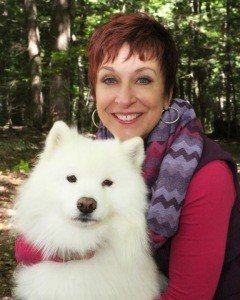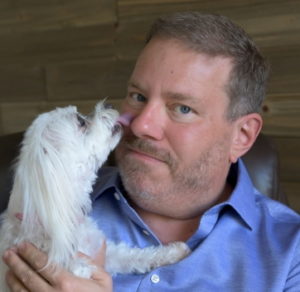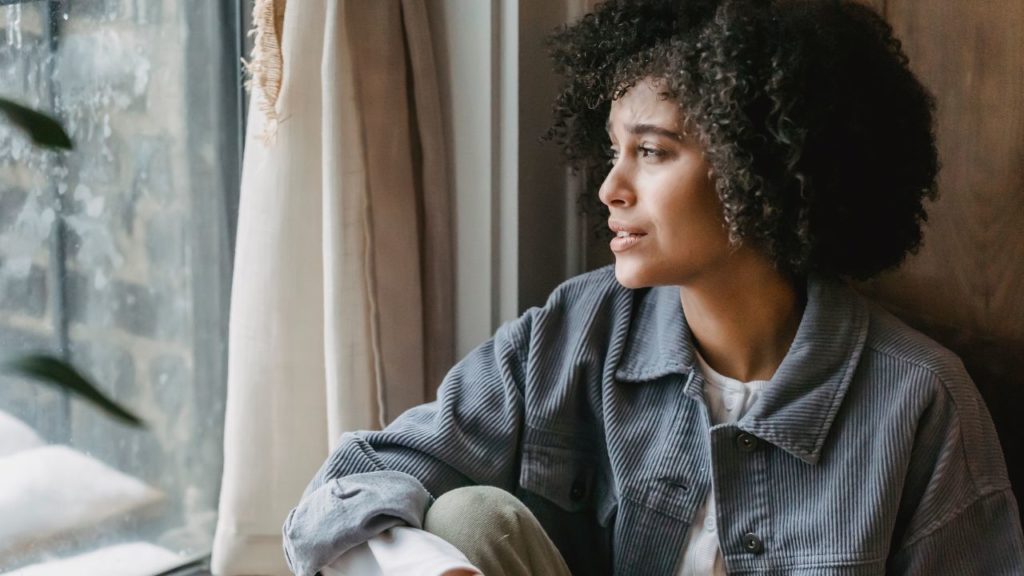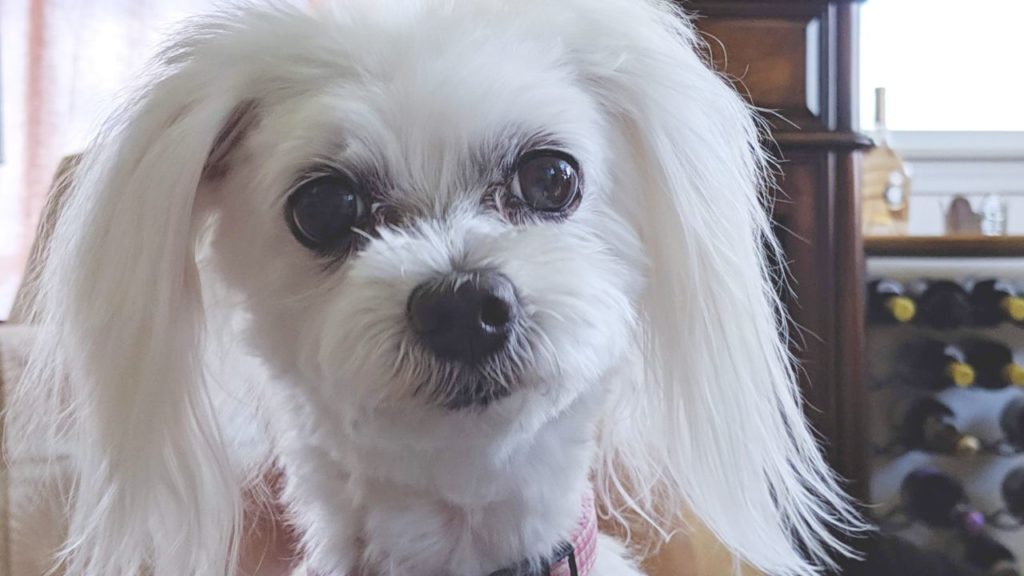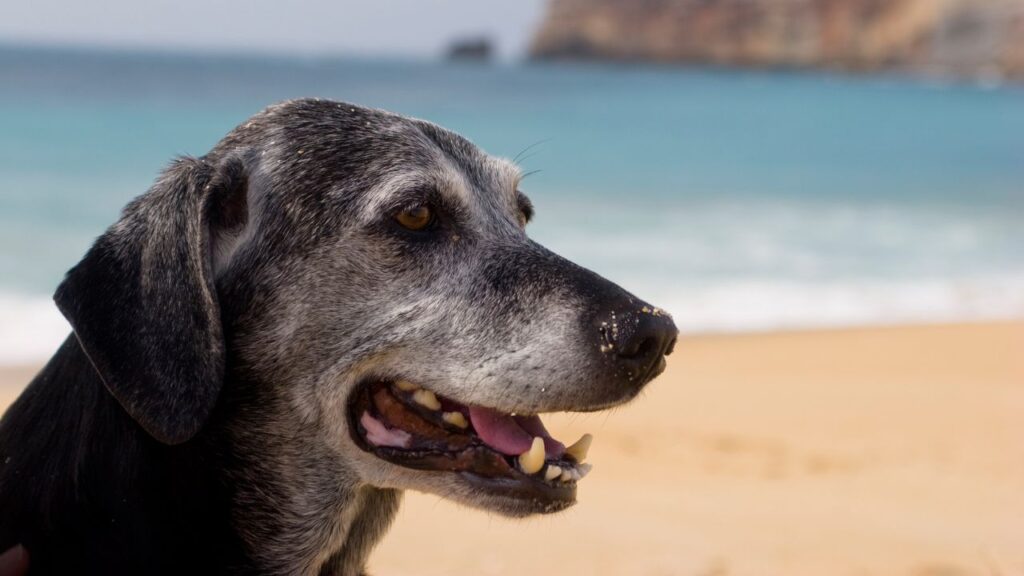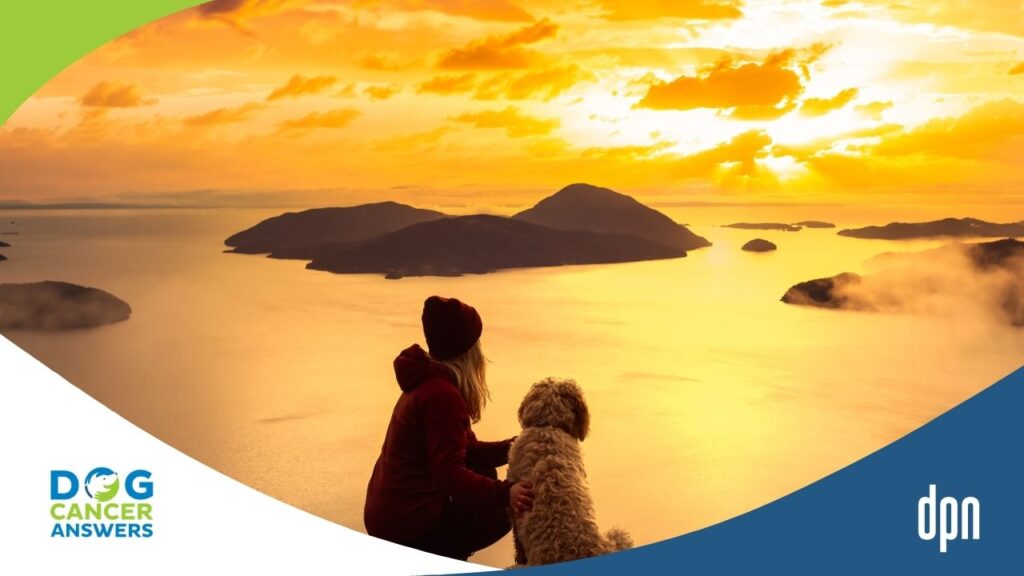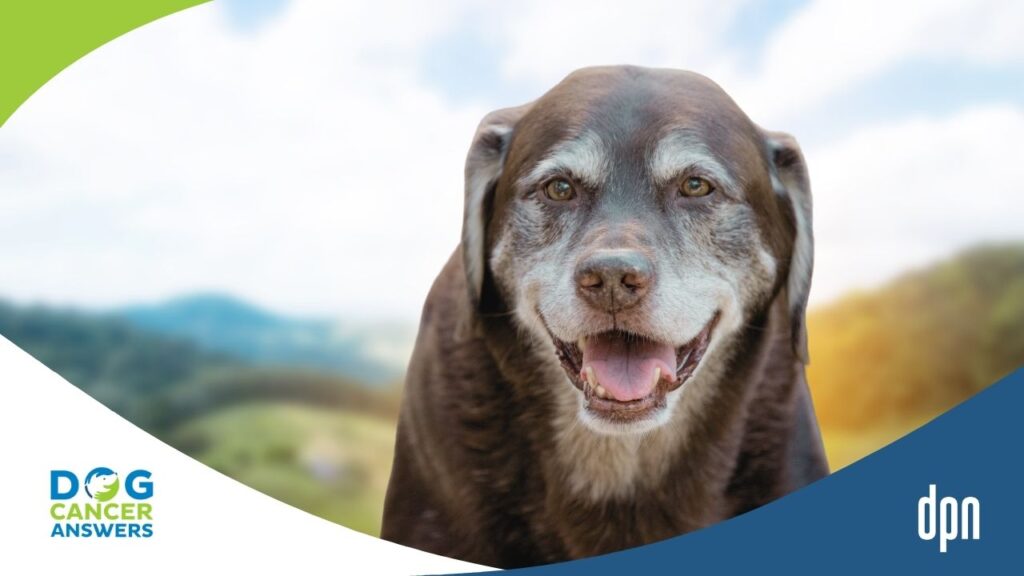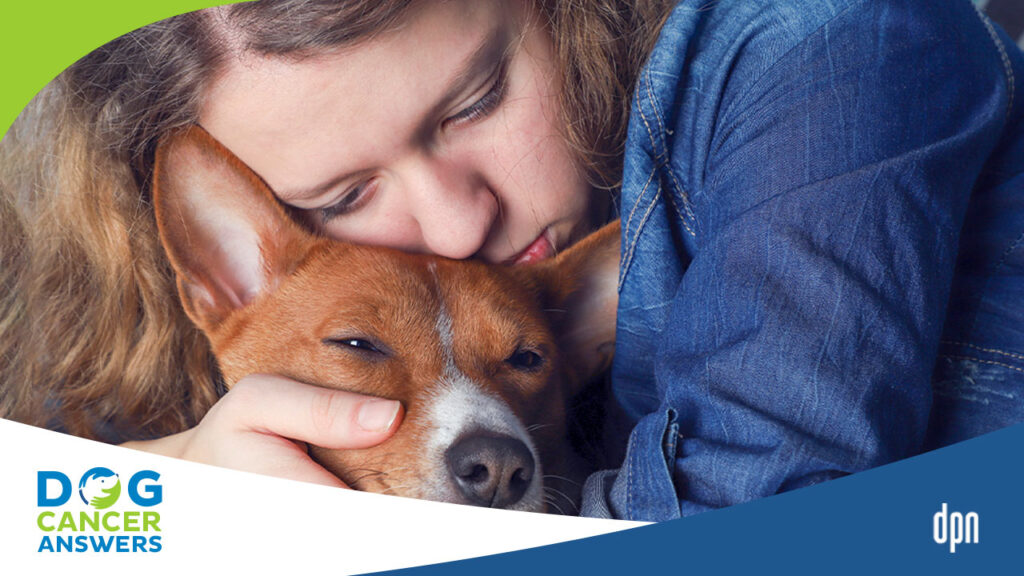EPISODE 99 | RELEASED December 7, 2020
How to Cope and Prepare for Your Dog’s Death | Wendy Van de Poll Deep Dive
Grief expert Wendy Van de Poll talks grief loss strategies, energy work, and even animal communication.
SHOW NOTES
Wendy Van de Poll, MS, CEOL, grief loss coach, is a best-selling author who has made it her life mission to help other dog lovers like herself, learn how to hope for the best, while also planning for the worst– in case that dreaded day comes sooner than you or your veterinarian anticipate. According to Wendy, preparing for loss can not only help you cope, but it can also help exchange feelings of guilt with feelings of a peaceful departure. One where both you and your dog can deeply connect and embrace all the feelings of love and shared special moments, even long after they make their journey over the rainbow bridge.
In this episode, Wendy Van de Poll, MS, CEOL, talks to our listeners about pet grief loss strategies, energy work, making lists to help document all the shared moments you had with your dog, and provides tips for listeners on how they can learn to open themselves up to communicating with their animals while they are living, as well as after they have passed on to the afterlife.
Links Mentioned in Today’s Show:
The Dog Cancer Survival Guide: Full Spectrum Treatments to Optimize Your Dog’s Life Quality and Longevity by Dr. Demian Dressler and Dr. Susan Ettinger.
https://mauimedia.com/titles/how-to-meditate-with-your-dog/ by James Jacobson and Kristine Chandler Madera
Wendy Van de Poll’s website: https://wendyvandepoll.com/
Center for Pet Loss Grief website: https://centerforpetlossgrief.com/
>> Wendy Van de Poll: Everybody does grief differently. And I can take my client through the entire journey of how to prepare not only for the passing of their dog or their cat or their horse, or their Guinea pig– how to prepare for you as well as your family– and even after the animal has passed, how to navigate that part of the journey as well.
>> Announcer: Welcome to Dog Cancer Answers, where we help you help your dog with cancer. Here’s your host, James Jacobson.
>> James Jacobson: Hello friend. Thank you for joining me this week on Dog Cancer Answers. Today, we are going to get very personal and talk about the often unspoken and very hard topics of pet loss and grief. You know, as the host of Dog Cancer Answers and as a dog lover, and as someone who has experienced firsthand– I know that it’s just hard sometimes discussing the feelings associated in the utter shock and fear that comes along with both getting an initial dog cancer diagnosis and then sometime down the road– and it could be weeks or months or years later, saying the final goodbye to your dog.
To help us identify some of these challenges and how to cope with them, we’ve brought in a best-selling author on pet grief and pet loss. Her name is Wendy Van de Poll. Wendy has written at least a dozen books on preparing to lose an animal, the grieving process after they’ve passed, and also, are you ready for this– communicating with departed animals.
Let’s be honest, talking about the possibility of death can make us a little bit uncomfortable, after all what is the appropriate level of grief for a dog? Everyone has their own opinion. And sometimes those opinions collide radically from those of our family and our friends.
And so here today, Wendy Van de Poll has a unique perspective on the subject and is an important voice for you to consider.
Wendy Van de Poll, thanks for being with us today.
>> Wendy Van de Poll: Thanks for inviting me.
>> James Jacobson: I am so intrigued to talk to you because so many of our listeners at one point are going to have to deal with pet grief. Now, whether they’re dealing with it because they have a dog that currently has cancer or some dog in the future. It’s a very common thing– dust to dust, ashes to ashes, but pet grief is something that can be so incredibly hard. And that’s what you’ve been focusing on for a good part of your career.
>> Wendy Van de Poll: Yes, I have. And people ask me, how can you do this? Dealing with people every single day with losing a pet. And it is a hard profession, but I find that each and every client has their own story and their own journey, and I just feel so honored to be helping them on that journey. So, it’s very rewarding in that way as well.
>> James Jacobson: When you say clients, tell me how you start working with people when their dogs are alive and in hospice.
>> Wendy Van de Poll: It depends. My favorite is when we’re in pet hospice, because then I can really take my clients through the entire journey of how to prepare not only for the passing of their dog or their cat or their horse or their Guinea pig or whatever– how to prepare for them, but as well as you, as well as your family, and then go through the whole thing, even after the animal has passed how to navigate that part of the journey as well.
So I offer the pet loss grief, and I’m helping people through those stages.
>> James Jacobson: You’ve obviously written like 12 books at this point. So this isn’t something that requires– does it require a facilitator or is this something that one can do themselves if they sort of bone up on the principles?
>> Wendy Van de Poll: One can do it on themselves for sure. And, you know, everybody does grief differently. So, I have clients that just go through my books and go through some of my courses and resources. And then I have others that want somebody to hold their hand and be there for them, because– it’s changing, which is great, but in our society, if we’re grieving our pet, we still get that kind of strange look like it was only a dog. How could you be so sad? It’s been four weeks. Why aren’t you over it yet?
>> James Jacobson: It’s a common thing that we hear so often.
We’ll start off with some tips. Some advice that you would give someone who has a dog that you know, is approaching the end of its life. What are some tips?
>> Wendy Van de Poll: Okay. So, first thing I would suggest for people to do is come up with a self-care plan for themselves.
Number one. So how are you going to take care of yourself? Are you going to get massages? Are you going to make sure you take some alone time? Are you going to gather healthy food in the house? So, you don’t forget– because you have to be strong and nourished to go through this journey.
If you have the time, sometimes we don’t have the time. It’s a sudden decision we have to make. So, it depends on the situation. So that’s the first tip I give people.
>> James Jacobson: So, self-care so that you can be more present for your dog and deal with it.
>> Wendy Van de Poll: Yes and be strong. It’s a depleting thing to go through because we forget about ourselves and if we don’t have that nourishment for body, mind, and spirit, we can easily plummet when we shouldn’t be plummeting. The other thing I recommend for people to do is come up with a list as a coach, as a pet loss grief coach, I find that one of the best things for people to do is to have a list of tasks.
And that might be– one take care of myself today by going for a massage. Two, Fluffy, gets her medication at nine. Fluffy, gets her little walk at 10. So, even though it doesn’t sound like a lot, what you’re able to do with the grief and the process and the journey, is being able to feel like you’re doing something.
>> James Jacobson: And so it’s the fact that you’re not just bobbing from moment to moment, but you’re being proactive by putting together a list.
>> Wendy Van de Poll: Lists are great because one of the biggest things that I find when people come to see me after is the guilt. I didn’t do enough– I should have– I wish I did. By creating your list, you can put those – I shoulds– I wish– into those lists so you can say, Oh wait, I did walk “Fluffy” every day.
>> James Jacobson: And the check mark kind of feels good, cause you’re feeling like you’re making some headway. And you’re codifying it and you feel a little bit more empowered in a process that can often feel unempowering. That’s a good tip. What else?
>> Wendy Van de Poll: Let’s see, take care of yourself, do the list, and also surround yourself– and this can be a little difficult and have its own set of grief and loss as well. If you are a person that needs a community while you’re grieving, surround yourself with people that are going to support you. And be aware of that.
>> James Jacobson: I think that’s an interesting one. Cause, so many people have friends and family who don’t quite get it. And like, why is this so hard on you? It’s just a dog.
>> Wendy Van de Poll: Right? Exactly. And I oftentimes hear myself saying– and I say it in my books and every place is, it usually is the person or people or group that you least expect it to come from. So, family and friends, we’re not all lucky to have understanding family and friends. So, it may be the cashier at the grocery store that has gone through the same thing. It might be the person pumping gas in your car. It may be somebody in a coffee shop that you’re standing in line with.
And obviously support groups that are focused for pet loss is another good place. But, I ask people and I encourage people to start doing that early, if they can, so that they have that support. So, they have that place to land. Because that’s very important.
>> James Jacobson: Now I know you focus a lot on pet hospice. What we’ve been talking about really are things in this preparation mode, but in terms of the actual hospice process, what are your suggestions or thoughts perhaps, even in terms of dealing with the dog?
>> Wendy Van de Poll: Yeah. If you are able to find someone like a certified canine massage therapist or an animal Reiki practitioner or somebody that can physically come to you– because that’s the best, if you can get them to come to your home. To start working with the animal to help them feel more comfortable. If you can’t and you’re working online with somebody, especially now with COVID… What I do with people is I do zoom sessions, and because I am a massage therapist for human, horse, and hound, I do a lot of energy work and animal communication and mediumship.
I help people learn to incorporate peace and calmness in the pet hospice period.
>> Jacobson: With those zoom sessions, are you actually showing people how to massage and touch their dogs in the appropriate ways?
>> Wendy Van de Poll: Yes.
>> James Jacobson: Can you speak generically about that? Like, what are some tips on comforting a dog that is perhaps anxious or lethargic or really deep into the cancer process?
>> Wendy Van de Poll: Yes, that’s a great question. One of the best ways to do it, and especially if your dog is comfortable with touch. I mean, some animals with cancer that I’ve worked with, don’t want to be touched, but there’s still a way we can use our hands and use our intention and use our energy to get the good vibes to our animal.
One thing I do suggest is if you’re upset and nervous or really grieving it’s probably not the time to do it. So, do it at a time where you feel refreshed– and you’re on that rollercoaster of the ups and downs, like, okay, well now I’m starting to feel a little bit okay in my grief, that’s the time to do it.
So what I suggest people do is, if their dog likes to be touched is you start at the head and you just gently place one hand on the head and then one hand at the base of the tail– at the beginning of the tail, you know, where the tail meets the body.
>> James Jacobson: Where the spinal cord ends– yeah
>> Wendy Van de Poll: Yes. And you just sit there and you breathe and you just spend quiet time. No talking just be very quiet and allow yourself to just move your top hand down the spine, very slowly while you’re breathing. When you incorporate breath and you couple it with the breathing of your dog, it can be calming and healing for both the dog and the person doing it.
>> James Jacobson: I love it. And it sounds very reminiscent– a lot of our listeners probably don’t know this– you don’t probably even know this Wendy… Years ago, I wrote a book that was actually a national bestseller called How to Meditate with Your Dog.
>> Wendy Van de Poll: Oh, I love it.
>> James Jacobson: Did you ever see that one?
>> Wendy Van de Poll: I’ve heard about it, but I haven’t had a chance to look at it yet.
>> James Jacobson: So, what you’re talking about is like, yeah– so there’s a lot of that process. And I know for most listeners to this podcast, they’re probably not as we’ll call it “woo woo” as that, but this is stuff that is definitely proven and works. And so setting the tone in the intentionality to calm your dog down.
Any other tips on a dog that you think may only have days or weeks?
>> Wendy Van de Poll: Let’s see, for what people can do… for days and weeks, it depends again on the animal, in my experience with my own animals– my dogs were pretty mobile until the last day. So, I was still able to do special things with them. Like take them for a short walk or something like that, or just take them outside.
Very healing and again, something that can help the guilt part of normal grief, is to create new I’m air quoting here, “adventures” with the animal. So maybe the dog can’t go on a two mile walk anymore, but maybe you can go out and sit in the sunshine with your dog and do some hands-on gentle breathing with your dog.
So creating new, so-called air quote “adventures” can– one, ease the situation, ease the stress, and help with the process.
Here’s another good one I just thought of this one– is we’re looking at our dog’s ears. And we go to the edges of our dog’s ears. And if anybody has ever rubbed a penny between your thumb and your pointer finger– you’re making little circles with your fingers. You start at the base of the ear on one edge and you make these little slow, little rubbing the penny all the way around the perimeter of the ears.
That is a way you can– it reduces shock. And it also reduces stress on all kinds of animals, even us. So we can even do that on our own ears, if we’re feeling anxiety with our loss.
>> James Jacobson: I will definitely vouch for that. When my dog Kanga had cancer surgery two years ago, she was not happy. And she looked at us like, I cannot believe you did this to me… this is incredible.
She was so angry and upset and drugged and just every emotion– it just hurt so much. And the thing that I had done our whole lives together is that ear work. And it was the only thing that you could just begin to see a little bit of a smile like– I recognize that, I remember that. And so now that has almost become a ritual every night now, two years later. She likes to be put to bed with a little ear massage and it feels good. And you’re right, I never tried it on a person, but I think that sounds great.
>> Wendy Van de Poll: Yes.
>> James Jacobson: So, you mentioned your own dogs and I think that’s kind of interesting because you had a dog named, Marley who basically started you off on this adventure.
>> Wendy Van de Poll: Yes. She was the catalyst. She’s no longer with me. It started a long time ago, but my experience with Marley really brought me into doing this on a full-time basis– writing so many books. And because, when I was a massage therapist for humans, horses, and hounds– by default, I don’t know how it happened, but the way it does in our world is I found myself helping people while I was massaging their animals. Because they wanted to do something special for their animals in pet hospice.
And when my dog was diagnosed with cancer and given her death sentence, so to speak, I went into proactive mode and I couldn’t find anything on pet loss– nothing. You know, between doing that with my massage and trying to find something, it was like, well, I could become a therapist, but I really don’t want to become a therapist, but I was a life coach. So that whole experience got me to research becoming an end of life and pet loss grief coach.
Again, there was no training. I had to go to a regular end of life coach who tailored it for me so that I could learn how to do it.
>> James Jacobson: So you took that human training and applied it, and there was nothing that you could find in the veterinary field?
>> Wendy Van de Poll: No. Not at that time.
>> James Jacobson: And you say that Marley was the one who gave you this. Can you go into that?
>> Wendy Van de Poll: Yeah, you know, we talk about our soul dogs, right. And Marley definitely was one of my soul dogs and she worked with me all the time in my practice. And she was the first one that I practiced what I preached, so to speak, you know, I did all the homework. I did everything that I learned and studied over the years and integrated it. So, when she died, I didn’t have the guilt. I still don’t feel that– I feel that with animals before that, but I felt that she was such a huge teacher and her process. She gave us 10 months because I went into fast forward and getting a whole new team of veterinarians, you know, self-care– everything.
So it was basically that experience that said, you know what? This works. So that’s the system that I did with her, that I created, is the same system I do with my people.
>> James Jacobson: Wendy, this is time to take a break right now, but when we come back, I want to talk to you about messages from the other side, because I understand there’s so much more to unpack here.
>> Wendy Van de Poll: Okay.
>> James Jacobson: We’ll be right back after this.
>> James Jacobson: Today’s episode is sponsored by the best-selling animal health book, The Dog Cancer Survival Guide: Full Spectrum Treatments to Optimize Your Dog’s Life Quality and Longevity. This book is known globally, globally, really around the world as the Bible, the roadmap, the essential survival guide for anyone caring for a dog that has been diagnosed with cancer.
It provides the ultimate veterinarian vetted advice from its authors, Dr. Demian Dressler, who is a full spectrum veterinarian and Dr. Susan Ettinger, who is a veterinary oncologist.
And no matter what you’ve heard, there are always proactive measures that you can take to help fight your dog’s cancer and perhaps even beat it. You will discover plenty of practical and evidence-based measures and strategies within the 500 pages of the book. This guide will help you optimize your dog’s life quality and longevity, even if they’ve been diagnosed with one of the more aggressive types of cancer.
There are things you can do, this book covers it. It’s available, wherever fine books are sold and it’s available in a multitude of formats, including an instant PDF download that costs– get this, less than ten-dollars, when you purchase directly from the publishers website at dogcancerbook.com. That’s the website you go to, where you can also get the paperback edition of the 500 page book for a slightly higher price, but that includes free shipping to any address in the United States.
Go directly to that website, dogcancerbook.com and use this promo code when you check out and you can save 10% off. The website is dogcancerbook.com and here’s the promo code “podcast”. Simple enough.
Listeners to this show get a 10% savings at dogcancerbook.com. I urge you to pick up a copy of The Dog Cancer Survival Guide.
Now, let’s get back to our conversation.
We’re speaking with Wendy Van de Poll. And… we talked right before the break a little bit about you and Marley and lessons the breakup, a little bit about you and Marley and the lessons you got. Now I understand that your connection with Marley and with dogs does not necessarily end after they take their last breath.
>> Wendy Van de Poll: Right. Okay. First of all, I’m going to give a little note if you will.
>> James Jacobson: Okay.
>> Wendy Van de Poll: I am a trained Scientist Biologist, so I have a master’s degree in Environmental Biology.
>> James Jacobson: I’m looking at some notes here that says Wolf Ecology. What is that?
>> Wendy Van de Poll: Yes, Wolf Ecology. I studied wild wolves in Minnesota. Um, that’s what I have my master’s degree. So, I actually tracked wild wolves and followed them in the wild and did all kinds of great stuff and behavior.
So I am very scientific. I come from a medical dental background. So I get the art and science of things. And when I was working with wolves, I was oftentimes alone with them and I would have these little, like feelings, if you will– when I was out there. Never really did anything about it.
>> James Jacobson: Little hunches.
>> Wendy Van de Poll: Little hunches, yeah. Little gut feelings. But, you know, I never really thought much about it. And I knew a little bit about the other side, the animal mediumship and animal communication and that sort of thing.
>> James Jacobson: And there’s a difference between animal communication and why don’t we hit that distinction first?
>> Wendy Van de Poll: Yeah. Animal communication is dealing with an animal when they’re still living. So, it can be in pet hospice at that time. And it’s usually dealing with behavioral or health issues or relationship issues, types of things. Animal mediumship is basically talking to the animal on the other side and the afterlife after they have passed.
And I’ve found that over the years of working with animals– I mean, when I was like five years old, but it went through the wolf time and then it came back when I became a massage therapist, primarily with my horses, and then it went into dogs. Because I was present in the hospice time with the animals and the people and people were starting to ask me to come to the euthanasia’s, so that I could continue the energy work we were doing during the hospice.
And as this kept going on and going on, I’m finding that all these animals are coming back to me that I was working with saying different things. I can’t remember one right off the hand, but people were also saying to me, do you know a good animal medium? And I would say to people, well, I have a little bit of connection. If you want to try it, let’s do it.
And so I would, and it was just uncanny about the information that I was getting. For instance, there was one animal in particular that it’s pet parent was very upset that she made a decision in regards to the euthanasia. She didn’t know why she made it– she wasn’t a client that I was working with. So, this was somebody that just called me off my website. And as the animal is talking to me, I’m getting this message like, okay, number one, you made the right decision. Number two, I had cancer and it wasn’t gonna go away. Number three, I really hated that veterinarian. So, I said those three things to that woman and she said, Oh my God, she said that whole process as the veterinarian was trying to euthanize, my dog just kept looking at me and giving me this look and the veterinarian was getting more angry and more angry at the process. And she goes, I felt like the dog was saying to me, stop it. Just stop it. I want a different veterinarian.
And you know, it’s just different things like that, that happen that are clear reminders for people that they did do the right thing. They did make the right choice. And the animals have an opinion about it.
>> James Jacobson: Do you have some more stories? This is kind of interesting. Does it seem to be a similar, consistent message that you’re getting, or do you often find messages from beyond that are like, I have no idea what this means– this is so weird.
>> Wendy Van de Poll: One kept showing me that there was a board and there was a space underneath. And it was nuzzling its nose underneath the board. And it was just being really real with that image that I was seeing it do that no matter what question the person had for me, that picture kept coming of that dog shoving its nose underneath the board.
>> James Jacobson: Right.
>> Wendy Van de Poll: And I said to the woman, I said, your dog is shoving it’s nose underneath the board. What is that all about? And she goes, Oh, Oh my God, I can’t believe this. She said that his best friend lived on the other side and that every morning they would go out and he would do that. You know, shove his nose underneath the board.
>> James Jacobson: These are concrete images that resonate.
>> Wendy Van de Poll: Right. And then the conversation might go on to like, there’s a message that your dog has for his friend that he’s okay. Or, you know, go over and visit because he also misses you because you had a relationship with him.
>> James Jacobson: Do you think that anyone can connect with their dog from beyond? You’re nodding your head, yes. Tell me about that.
>> Wendy Van de Poll: Yes. We all have this ability. I’m not special. It’s basically because I’ve worked at it and I’ve worked hard at it.
>> James Jacobson: You practiced.
>> Wendy Van de Poll: And I practice. It’s like going to the gym. So I go to the energy gym or the psychic gym, if we will. Yes, we can all do this. And we all do it differently. And I don’t personally think it’s “woo woo”. And I feel like I can say that with confidence because I have the scientific background.
>> James Jacobson: A few years ago, I know that you wrote a bachelor’s thesis on women and animals– and I think the concept was that women are really good at communicating with animals.
>> Wendy Van de Poll: Where did you find that?
>> James Jacobson: Dog Podcast Network. We do our research here.
So… okay. So this is something that has been a lifelong interest. So, what are some tips for those who are listening, who are receptive and open to possibly connecting with a dog or a pet that is no longer with us?
>> Wendy Van de Poll: First, the biggest is trust your gut. Don’t second guess it. Because we are all intuitive, we all get the messages, but the biggest thing is we’re human and we start self-judging ourselves.
Our gut is one of the most honest things we’ve got on this planet. So, when you’re sitting with your animal, whether it’s in pet hospice and you get that feeling like, Oh, Fluffy, maybe thirsty, or, you know, Fluffy, hurts. So I’m going to put my hand where I feel like it’s hurt. Don’t second guess that, go for it. In the afterlife, trust the sensations you get.
I have clients that can feel their animal coming back to visit them. Trust that, that’s okay. And that you’re right on with it. Trust that when you see the little flash of light or you hear the bark or you smell them, or you see them in the clouds. Those are signs and you can’t dispute that stuff– I mean, it happens.
>> James Jacobson: So many people say that, I just saw my dog in the clouds. And whether it’s a Rorschach test or something– it’s kind of funny because so many times people I’ve heard, I mean, dozens, where they say, yeah, and maybe it is a Rorschach test? But you’re saying just open yourself up to the possibilities.
>> Wendy Van de Poll: And trust it. Because it’s not going to do any harm. It really is not. And it can also feel really good.
>> James Jacobson: And it can be comforting.
Any last thoughts, any tips that you’d want to share with people who are going through this process, Wendy?
>> Wendy Van de Poll: Yes. Since one of the most healing ways that people can go through this journey, no matter what your belief system is, is to write love letters to your animals.
>> James Jacobson: I like where this is going.
>> Wendy Van de Poll: Yes. It’s to write love letters. It is one of the most healing and you can do it any time. These love letters are just for you, so they don’t have to be grammatically correct. They don’t have to make sense. You can do it during pet hospice, and you can do it when they have passed into the afterlife.
You can write letters to apologize. You can write letters, thanking them. You can write any kind of letter you want and then save them. So, as you go through the journey and years to come, you can go back and read them and see how incredible your life was with that dog.
>> James Jacobson: That is beautiful.
I’ll add a refinement of that. Something that I recommend to people when I talk to them who are about to lose a pet. Which is to sort of do that as a life journey, where you sit down with your dog and basically tell your dog’s whole story together. Like, the first time I picked you up, you were like, eight ounces. And do you remember, we went– and then the dog feels that vibe, and by the time you go through the whole process and it can take an hour or two or whatever, the dog is very present and there, and you feel so much better. I did that once with the dog and I recorded it on a cassette tape and maybe someday I’ll share it with the world.
I haven’t listened to it, but it definitely helped prepare me for that process.
>> Wendy Van de Poll: Yes.
>> James Jacobson: Wendy, I really have enjoyed speaking with you. There’s just so many things, and this is a subject people just genuinely, don’t talk about, but they’re beginning to speak about it more certainly from decades ago, it was just thought of like, that’s just a dog.
>> Wendy Van de Poll: Right. It is. And you know, even corporations now I see are giving, uh, pet loss time. So, it’s like, go work for those, you know, those are great places to work if they do that.
>> James Jacobson: Wendy Van de Poll, thank you so much for being with us today.
>> Wendy Van de Poll: Thank you. It was a pleasure.
>> James Jacobson: Preparing for the inevitable and grieving won’t ever be easy, but maybe with the help of experts and grief coaches or even spiritual influencers like today’s guest– we might all be able to find some peace and tranquility in this whole process, both before and after our dog’s cross over the Rainbow Bridge to that heavenly dog park on the other side.
I thank you for listening today, and I want to let you know that if you enjoy this podcast, you ought to subscribe to it for free using your favorite podcast app or on our website at dogcanceranswers.com or on YouTube or on Spotify, because here’s the benefit of subscribing – You will get every future episode directly in your feed. Now some of those episodes will be applicable to your dog, some will not. But having them available in your feed is really important. So please subscribe today and remember, subscribing to a podcast is always free.
Speaking of free subscriptions, I want to also encourage you to subscribe to the newsletter, Dog Cancer News. Which is a really informative publication with lots of tips and suggestions and the latest news that you need to know to help optimize your dog’s life quality, while you’re dealing with cancer. You can get a free subscription to Dog Cancer News at the website, dogcancernews.com. Go to dogcancernews.com, type in your email address, and you’ll receive a free subscription to Dog Cancer News.
And, you know, as with pretty much with any newsletter these days, if you don’t want it anymore, you can unsubscribe at any time and it’s easy. But this is a newsletter that you want to be receiving if you’re on the dog cancer Iditarod.
Today’s topic of pet loss and pet grief is something that I think we should be exploring more of in the future. If you agree, let us know– let our team of producers know– let me know by dropping us an email or a message through our website at dogcanceranswers.com.
If you have someone who you think is an expert in the field or whose voice you think should be represented, either for this topic or any other topic related to dog cancer– let us know. Again, we are here to provide you with the answers to the questions that you have, that you think will benefit other dog lovers, who are dealing with dog cancer. Please talk to us, communicate with us, we’re real live people. It’s at dogcanceranswers.com.
Did you hear those, those touchstones are here to remind me, to remind you that we have veterinarians on call at Dog Cancer Answers on our listener line. If you have questions for one of our dog cancer, veterinarians, give us a call and tell us about it. And your question could be answered by one of our veterinary experts on a future episode of Dog Cancer Answers.
The telephone number to call is (808) 868-3200. That’s (808) 868-3200. The phone line is available 24 hours a day, seven days a week. It’s obviously a recorded line and you can also visit on our website at dogcanceranswers.com.
Well, that is it for today. Until next time, I’m James Jacobson and from all of us here at Dog Cancer Answers and Dog Podcast Network. We wish you and your dog, a very warm, aloha.
>> Announcer: Thank you for listening to Dog Cancer Answers. If you’d like to connect, please visit our website at dogcanceranswers.com or call our listener line at (808) 868-3200.
And here’s a friendly reminder that you probably already know, this podcast is provided for informational and educational purposes only. It’s not meant to take the place of the advice you receive from your dog’s veterinarian. Only veterinarians who examine your dog can give you veterinary advice or diagnose your dog’s medical condition.
Your reliance on the information you hear on this podcast is solely at your own risk. If your dog has a specific health problem, contact your veterinarian.
Also, please keep in mind that veterinary information can change rapidly. Therefore, some information may be out of date. Dog Cancer Answers is a presentation of Maui Media in association with Dog Podcast Network.
Hosted By
SUBSCRIBE ON YOUR FAVORITE PLATFORM
Topics
Editor's Picks
CATEGORY
